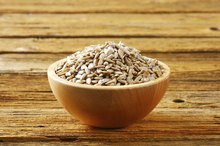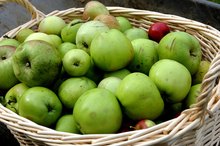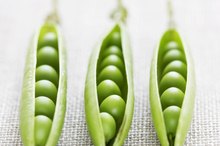Recommended Food for Kidney Dialysis Patients
When your kidneys are no longer able to filter waste products from the body, your doctor may recommend dialysis. With this treatment, diet is important to help control blood levels of certain nutrients. The sodium, potassium, phosphorus, protein and fluid in the foods you eat need to be monitored with your kidney diet. Meeting with a kidney dietitian can help you develop a healthy diet plan while on dialysis.
Low-Sodium Foods
Sodium is added to many of the foods you eat as a preservative. On dialysis, it is recommended, that you eat no more than 2,000 milligrams of sodium per day. Cook meals at home with fresh herbs and spices to limit added sodium. Read labels and avoid pre-packaged or canned foods high in sodium. Select fresh meats, fruits and vegetables not preserved in a salty sauce or broth. Also, when shopping for snacks, choose low-sodium or salt free versions of chips, pretzels and crackers.
- Sodium is added to many of the foods you eat as a preservative.
- Also, when shopping for snacks, choose low-sodium or salt free versions of chips, pretzels and crackers.
Monitor Potassium Intake in Foods
Can You Eat Before Dialysis?
Learn More
Grains, breads, cereal, fruits and vegetables contain higher amounts of potassium. You also need to be careful with salt substitutes as many contain the ingredient potassium chloride. Tomatoes, potatoes, bananas, whole grain foods and orange juice are all very high in potassium and should be avoided or eaten sparingly while on dialysis.
Limit High Phosphorus Foods
With kidney disease, you should also be cautious about not overeating high phosphorus foods. Milk and dairy products, meat, whole grains and cola are all high phosphorus foods. Meat is an excellent protein source while you are on dialysis, so other foods high in phosphorus should be eaten in moderation 5. Limit dairy products to one serving per day. Unenriched rice milk or non-dairy creamer can be used as a milk alternative. Aim for the correct portion of meat at meals to reach your protein goals. The average protein amount needed with dialysis is 6 to 9 ounces daily, or 2 to 3 ounces of protein at breakfast, lunch and dinner. Choose white starches instead of whole grains. Replace dark colas with clear, lemon-lime soda to reduce phosphorus intake.
- With kidney disease, you should also be cautious about not overeating high phosphorus foods.
- Meat is an excellent protein source while you are on dialysis, so other foods high in phosphorus should be eaten in moderation 5.
Eat Adequate Protein Sources
Foods to Avoid With Kidney Problems
Learn More
Eating meat and other sources of protein is important for your kidney diet. Beef, eggs, fish, pork and poultry can all be included in your diet. Choose lean meats without any high-salt gravy or sauces. Limited amounts of cheese, low sodium lunch or breakfast meats, nut butters and cooked beans like black or kidney can also help you meet your protein goals. Meeting with your kidney dietitian can help determine how much protein you should be including in your diet 5.
- Eating meat and other sources of protein is important for your kidney diet.
- Limited amounts of cheese, low sodium lunch or breakfast meats, nut butters and cooked beans like black or kidney can also help you meet your protein goals.
Drink Enough Fluids
You will be told to drink a specific amount of fluids per day depending on your doctor's recommendation and the amount of urine your kidneys produce. The prescribed amount will keep you hydrated, but not cause you to retain too much fluid between dialysis sessions. Cranberry, grape and apple are all good juice selections. Coffee, tea, low-sodium broth, water and clear sodas can also help keep you hydrated.
- You will be told to drink a specific amount of fluids per day depending on your doctor's recommendation and the amount of urine your kidneys produce.
- The prescribed amount will keep you hydrated, but not cause you to retain too much fluid between dialysis sessions.
Related Articles
References
- Nutrition and Diagnosis-Related Care; Sylvia Escott-Stump, MA, RD, LDN
- The Academy of Nutrition and Dietetics Nutrition Care Manual: Chronic Kidney Disease Stage 5 Nutrition Therapy for People on Dialysis
- Davita: Dialysis Diet Differences: Hemodialysis and Peritoneal Dialysis
- Davita: Milk Alternatives for People With Chronic Kidney Disease
- Davita: Fluid Control for Kidney Disease Patients on Dialysis
- Banshodani M, Kawanishi H, Moriishi M, Shintaku S, Tsuchiya S. Association between dialysis modality and cardiovascular diseases: A comparison between peritoneal dialysis and hemodialysis. Blood Purif. 2019;:1-8. doi:10.1159/000504040
- Ch'ng CC, Ong LM, Beh KKM, et al. Survival advantage of initiating dialysis in elderly and non-elderly incident end stage kidney disease patients. Nephrology (Carlton). 2020; Jan 4. doi:10.1111/nep.13689
- Hussain JA, Flemming K, Murtagh FE, Johnson MJ. Patient and health care professional decision-making to commence and withdraw from renal dialysis: a systematic review of qualitative research. Clin J Am Soc Nephrol. 2015;10(7):1201-15. doi:10.2215/CJN.11091114
- US Renal Data Systems. Bethesda MD: National Institutes of Health, National Institute of Diabetes and Digestive and Kidney Diseases; 2019. Chapter 5, Mortality. USRDS 2019 Annual Data Report.
Writer Bio
Stacey Phillips is a registered dietitian and nutrition writer. She has had articles and patient information handouts published in the "Renal Nutrition Forum" and the "Journal of Renal Nutrition." She holds a Bachelor's degree from the University of Illinois in Champaign-Urbana and a Masters degree at Central Michigan University.









